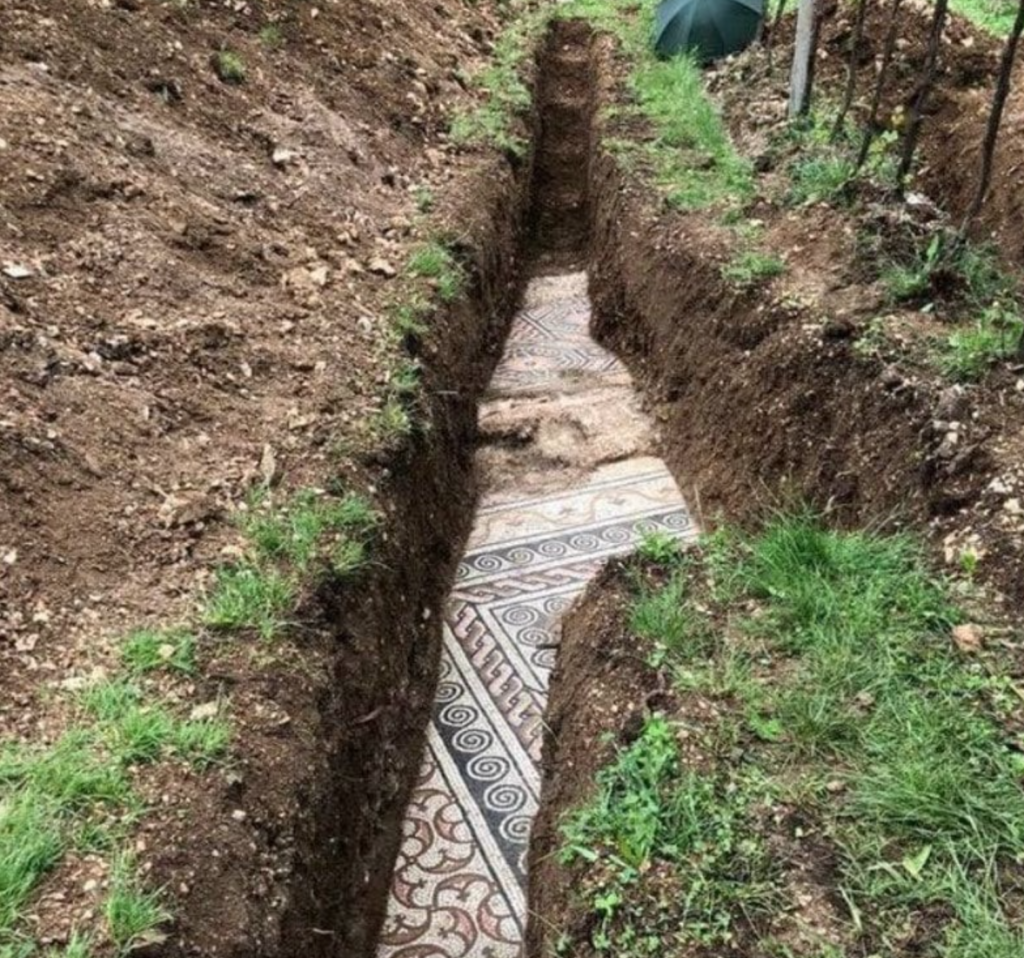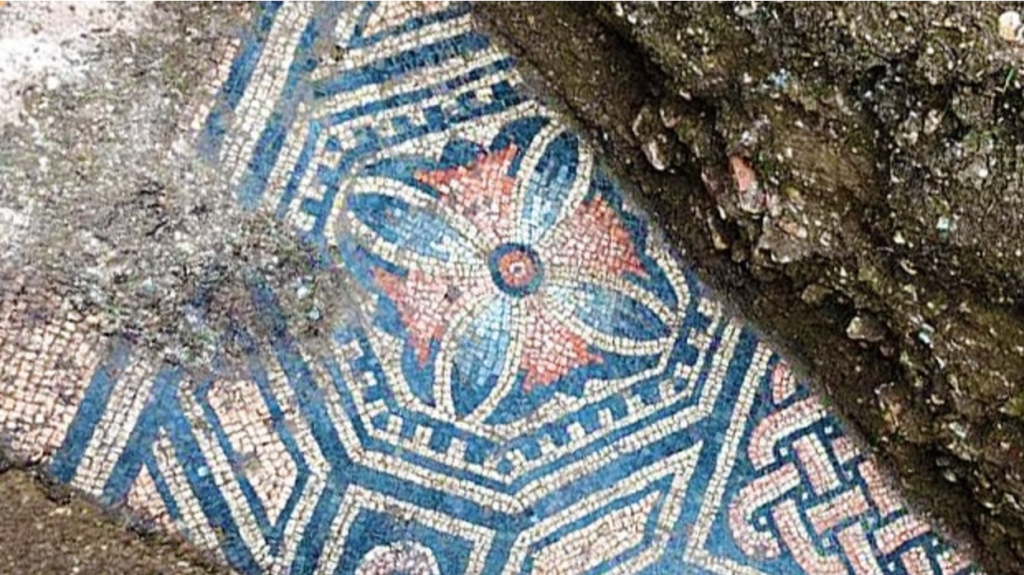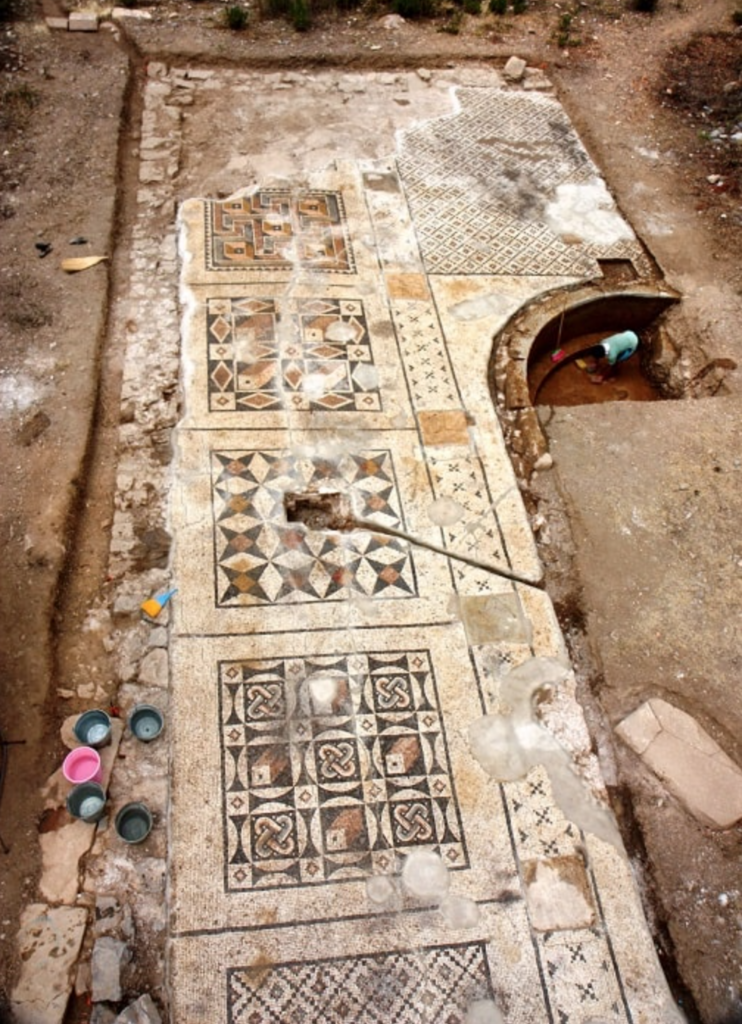In the idyllic hills above Negrar di Valpolicella, a remarkable discovery has unearthed a window into Italy’s ancient past. After nearly a century of dormancy, archaeologists have once again begun to uncover the remains of a stunning Roman mosaic, a testament to the ingenuity and artistry of our ancestors.
This intricately designed floor, believed to have originated from a grand Roman villa, has captured the attention of historians, archaeologists, and the public alike. The meticulous patterns of marble and glass tesserae have laid dormant for centuries, only to be meticulously revealed through the painstaking efforts of a dedicated team of researchers.
The story of this Roman mosaic is one of perseverance and patience. First discovered in the early 20th century, the site had been largely abandoned for decades, with only sporadic attempts to uncover its secrets. But now, a new generation of archaeologists has taken up the mantle, determined to unlock the mysteries that have long been buried beneath the surface.

As the team carefully brushes away the layers of soil and debris, the true beauty of the mosaic begins to emerge. The geometric patterns, once obscured by the passage of time, now shimmer with vibrant colors and intricate details. Each tile, each curve, each intersection, tells a story of the skilled craftsmen who brought this masterpiece to life centuries ago.
But the mosaic is just the beginning. Alongside the stunning floor, the excavations have also uncovered the foundations of the villa itself, providing invaluable insights into the lives and customs of the Romans who once called this place home. From the architecture to the artifacts, every new discovery is a puzzle piece that helps to paint a clearer picture of this remarkable period in history.
For archaeologists and historians, this discovery is a true treasure trove. The Roman mosaic not only represents a rare and well-preserved example of ancient craftsmanship, but it also offers a unique opportunity to delve deeper into the social, cultural, and economic fabric of the Roman Empire. By studying the details of the mosaic and the surrounding structures, researchers hope to shed light on the daily lives, beliefs, and aspirations of the people who lived in this villa centuries ago.

But the significance of this find extends far beyond the academic realm. As the team works to carefully excavate and preserve the mosaic, they are also exploring ways to share this remarkable discovery with the public. By opening up the site to visitors, they aim to foster a deeper appreciation for the rich cultural heritage of this region and inspire a new generation of history enthusiasts.

Of course, the road ahead is not without its challenges. Preserving the delicate mosaic and the surrounding structures requires meticulous planning and execution, with every step carefully monitored to ensure the integrity of the site. Funding and resources are also a constant concern, as the team must navigate the complexities of bureaucracy and secure the necessary support to continue their work.
Despite these obstacles, the team remains undaunted, driven by a deep passion for uncovering the secrets of the past and a commitment to sharing this remarkable discovery with the world. As they continue to peel back the layers of history, they know that they are not just preserving a piece of the past, but creating a legacy that will inspire and educate generations to come.



